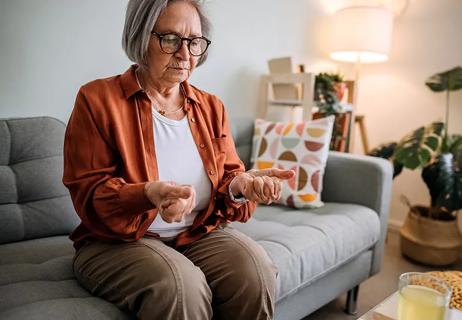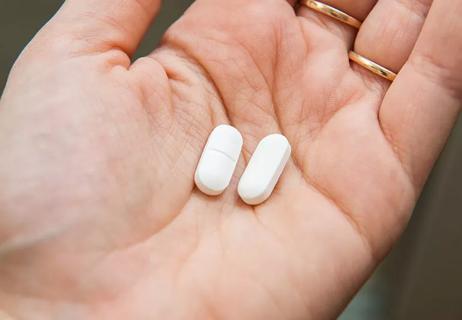Relief for sore, aching muscles and painful joints

Whether you suffer from arthritis pain, are an athlete looking to find relief from an injury, or you tweaked your knee doing yard work – chances are you’ve probably reached for a bottle of topical pain relief before. These over-the-counter products are applied directly to the skin and come in gels, creams, sprays and patches.
Advertisement
Cleveland Clinic is a non-profit academic medical center. Advertising on our site helps support our mission. We do not endorse non-Cleveland Clinic products or services. Policy
Bengay, Icy Hot and Biofreeze are common brands of these products, but how exactly do they work?
Pain management specialist Robert Bolash, MD, talks about finding pain relief and what you need to know about these products.
A: Over-the-counter topical pain relievers often include methyl salicylate (also known as oil of wintergreen). This ingredient gives topical pain relievers that minty smell and creates a cooling sensation when applied to the skin.
Methyl salicylate is often used as counterirritant, which basically acts as a distraction to pain points. Depending on the product and the other ingredients in it, these rub on treatments may also contain a non-steroidal anti-inflammatory drug (NSAID). You know NSAIDs from medicines like ibuprofen and aspirin. When it’s absorbed into the skin it can decrease the inflammatory reaction.
Some topical pain relievers also contain capsaicin, which is a compound found in chili peppers and is responsible for producing a warming sensation.
Other products may contain menthol, also known as mint camphor, which causes a cooling sensation and can trick the mind into thinking that the skin or body temperature is dropping. In return, this cooling feeling desensitizes the nerve endings. Like ice or cold packs, menthol decreases arterial blood flow.
Advertisement
A: Topical pain relievers work best on acute musculoskeletal pain, rather than chronic pain. So if you have a nagging sore neck or pulled a muscle in your shoulder, you might benefit from slathering on a layer.
These products are also used to treat:
Discomfort and pain associated with cancer has also been shown to improve from topical pain relievers.
A: It all comes down to personal preference, but it’s important to review the active ingredients in each product. If you’re looking for an easy-to-apply spray that contains capsaicin, it might only come in a gel form. So read the label and decide what you’re looking for first.
A patch typically works well on an area where it can be applied to a flat surface, so it might be best to reach for this product with back or neck pain. On the other hand, a cream or gel might be best for a sore elbow or knee so that the joint can still move and bend.
A: It’s important to use these products as directed. Although it’s extremely rare, there have been instances where overuse and misuse has led to serious side effects and even death due to salicylate poisoning.
Never mix these products with heat, such as from a heating pad. Doing so could cause the product to be absorbed into the blood stream at a faster rate.
If you use a topical pain reliever be sure to:
Experts recommend to not use topical pain relievers (of any kind) if you’re pregnant.
A: Most topical pain relievers should not be used over seven days. Using it for longer than directed could result in a rash or sometimes even a chemical burn. Stop use if your condition worsens or the area becomes irritated.
If your stubborn pain just won’t quit, it might be time to bring in the big guns and talk with your doctor. They can help you solve the problem of your nagging pain and might even prescribe a prescription based topical pain reliever.
Advertisement
Learn more about our editorial process.
Advertisement

Misleading claims, lack of scientific evidence and the risk of over-doing it are all concerns

Pain relief and nausea reduction are just two of this root’s many positive attributes

This analogy can help you explain the daily struggle of chronic pain

Don’t be so quick to pop that over-the-counter painkiller

6 expert tips to soothe your aching spine

New government advisory recommends non-addictive options first

Most recommended precautions center around minimizing bruising or swelling

Type 2 diabetes isn’t inevitable with these dietary changes

Applying a hot or cold compress can help with pain